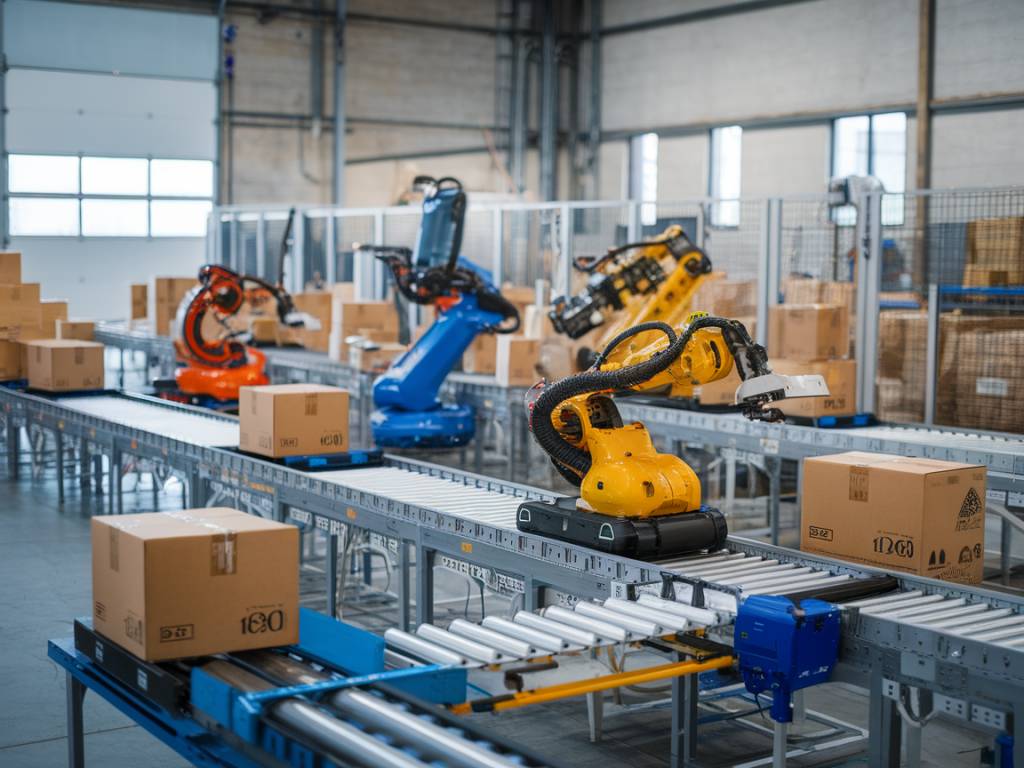The integration of robotics in global logistics networks has transformed the economic landscape, redefining efficiency, cost management, and ultimately, profitability. As businesses and consumers demand faster and more reliable delivery services, the role of robotics becomes increasingly pivotal. This article delves into the various economic impacts of robotics on global logistics networks, examining the nuances of operational cost, employment, and supply chain efficiency.
Enhancing Operational Efficiency
Robotics in logistics profoundly enhances operational efficiency by automating repetitive and time-consuming tasks. This automation not only reduces the margin of error but also accelerates processes that would otherwise require substantial human labor. Automated guided vehicles (AGVs) and drones serve as prime examples of how robotics can streamline warehouse operations and last-mile delivery.
AGVs facilitate the movement of goods within warehouses, reducing the time spent on manual transportation. Similarly, drones in logistics are making last-mile delivery faster and more economical, especially in remote or inaccessible areas. These advancements contribute to significant time savings, directly impacting the overall efficiency of logistics operations.
Cost Reduction and Economic Impact
One of the most compelling economic impacts of robotics in logistics is cost reduction. The initial investment in robotic systems can be substantial, but the long-term savings often outweigh the upfront costs. By minimizing human labor requirements and reducing errors, businesses can achieve substantial cost savings in both warehousing and transportation.
Maintenance costs of robotic systems are typically lower than the costs associated with human labor. Additionally, robots can operate continuously without breaks, thereby maximizing productivity and minimizing downtime. This continuous operation enables businesses to meet high demand without incurring additional labor expenses.
Transforming Employment Landscape
The rise of robotics in logistics has sparked debates regarding its impact on employment. While robots take over repetitive and manual tasks, they also create opportunities for new types of employment. The demand for skilled labor to design, maintain, and operate robotic systems is on the rise.
Furthermore, employees are finding new roles in areas such as data analysis, system management, and strategic planning, which are crucial for the seamless integration of robotic technology into logistics networks. Thus, while there may be a shift in the types of jobs available, the overall employment landscape is likely to evolve rather than diminish.
Improving Supply Chain Resilience
Robotic systems enhance supply chain resilience by providing more predictable and reliable operations. Reduced dependency on human labor helps mitigate risks associated with labor shortages, strikes, and health-related disruptions. This predictability ensures that supply chains can remain operational under a variety of conditions, thus enhancing their resilience.
Additionally, the precision and efficiency of robots can lead to better inventory management, reducing excess stock and minimizing waste. This level of efficiency is particularly beneficial in just-in-time (JIT) inventory systems, where timely delivery and reduced lead times are crucial.
Environmental Impact
The use of robotics in logistics also has environmental implications. Robots typically consume less energy compared to manual operations, leading to a reduction in the carbon footprint of logistics activities. Electric-powered AGVs and drones contribute to this reduction by minimizing the reliance on fossil fuels.
Moreover, the optimization of delivery routes through robotic technology reduces fuel consumption, further decreasing environmental impact. Organizations that prioritize sustainability can leverage robotics to align their logistics operations with environmental goals, enhancing their corporate social responsibility profiles.
Technological Advancements and Future Prospects
Ongoing advancements in artificial intelligence (AI) and machine learning are set to further revolutionize robotics in logistics. Enhanced AI capabilities enable robots to learn and adapt to new environments and tasks more efficiently, increasing their utility in complex logistics scenarios.
Future prospects include the wider adoption of autonomous vehicles for long-haul transportation and the integration of Internet of Things (IoT) devices with robotic systems. These advancements promise to take supply chain automation to the next level, delivering unprecedented efficiency and reliability.
Case Studies and Real-World Applications
Several companies have already demonstrated the successful implementation of robotics in their logistics operations. For example, Amazon’s use of Kiva robots in their fulfillment centers has significantly improved order processing times and reduced operational costs.
Similarly, DHL has implemented robotics in sorting facilities, enhancing their sorting speed and accuracy. These real-world applications provide tangible evidence of the economic benefits that robotics can offer to logistics networks.
From enhancing operational efficiency to reducing costs and improving supply chain resilience, the economic impacts of robotics on global logistics are far-reaching. As technology continues to evolve, the role of robotics in logistics will only become more integral, offering new opportunities and challenges for businesses worldwide.
